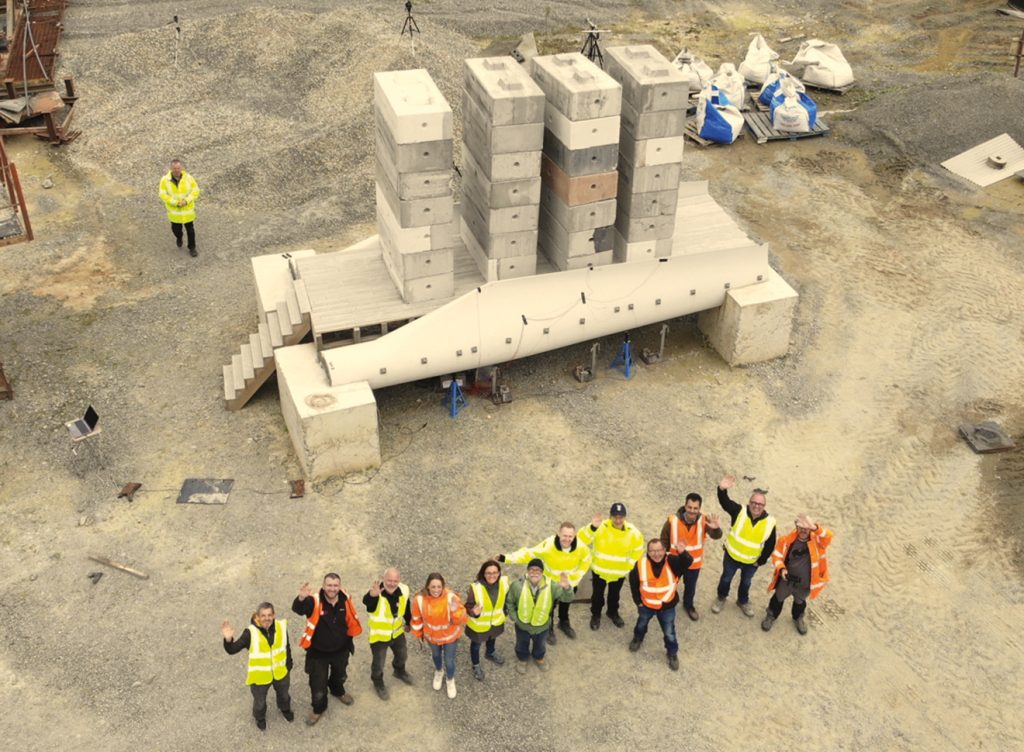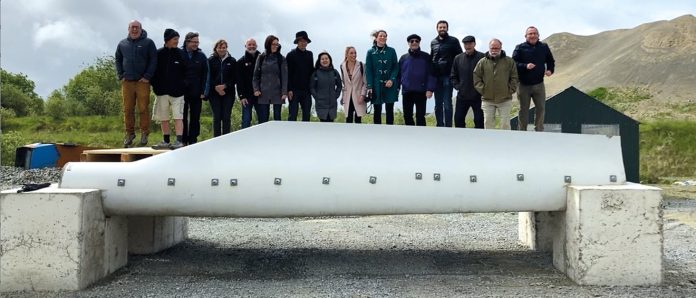Ireland is embracing wind power to meet its renewable energy goals, but with this increase in wind energy comes a growing waste problem.
Wind turbines generally have a 20-25-year lifespan, after which the turbines may be decommissioned and the wind farm owners are left to deal with the blade material, which is the only part of a turbine that cannot be commercially recycled. Blades are typically landfilled or incinerated, options which are not only a waste of a highly engineered material, but are becoming publicly unpalatable or banned outright.
The Re-Wind project was conceived in 2016 in this context, in order to find sustainable end-of-life options for blade material. The project pulled together a multi-disciplinary research team from Queen’s University Belfast, the US and RoI to come up with wind blade repurposing concepts that were socially and environmentally superior to the current options, considering market need for the products as well as geographical logistics. The concept that came to the forefront early in the project was a pedestrian bridge using the blades as the superstructure.

A team from the Civil Engineering Department in Queens University Belfast, led by Kenny McDonald, built and instrumented a 6m test bridge using two Nordex N29 blades. The bridge had conventional foundations, abutments and decking, while utilising the blades as the superstructure. The first round of testing was to a six-tonne service load. Secondly, an ultimate load test was attempted – 33 tonnes were applied with a measured 9mm deflection. Ultimate load was not achieved as the bridge remained serviceable. Deflections and strains were measured and residual deflection on removal of all loading was 0.5mm.
The bridge reinforced all testing done in US and Ireland on the Re-Wind project and surpassed all expectations. The demonstrated 5.5 factor of safety far exceeded the 2-3 required FOS in modern design codes.
The main cost savings in utilising wind blades in pedestrian bridges is in the reduced maintenance required of the blade material as compared to steel.
The Re-Wind Network has a spin-out business called BladeBridge, which is commercialising the use of unwanted wind blades for use in a suite of products such as bridges and outdoor furniture.
BladeBridge designs and fabricates pedestrian bridges which use discarded wind blades as structural support members. BladeBridge is the only bridge on the market that substitutes steel support members with waste material which was destined for landfill or incineration. This circular material use offers an advantage in RoI tendering under the Green Public Procurement requirements.
More information can be found at www.bladebridge.ie








